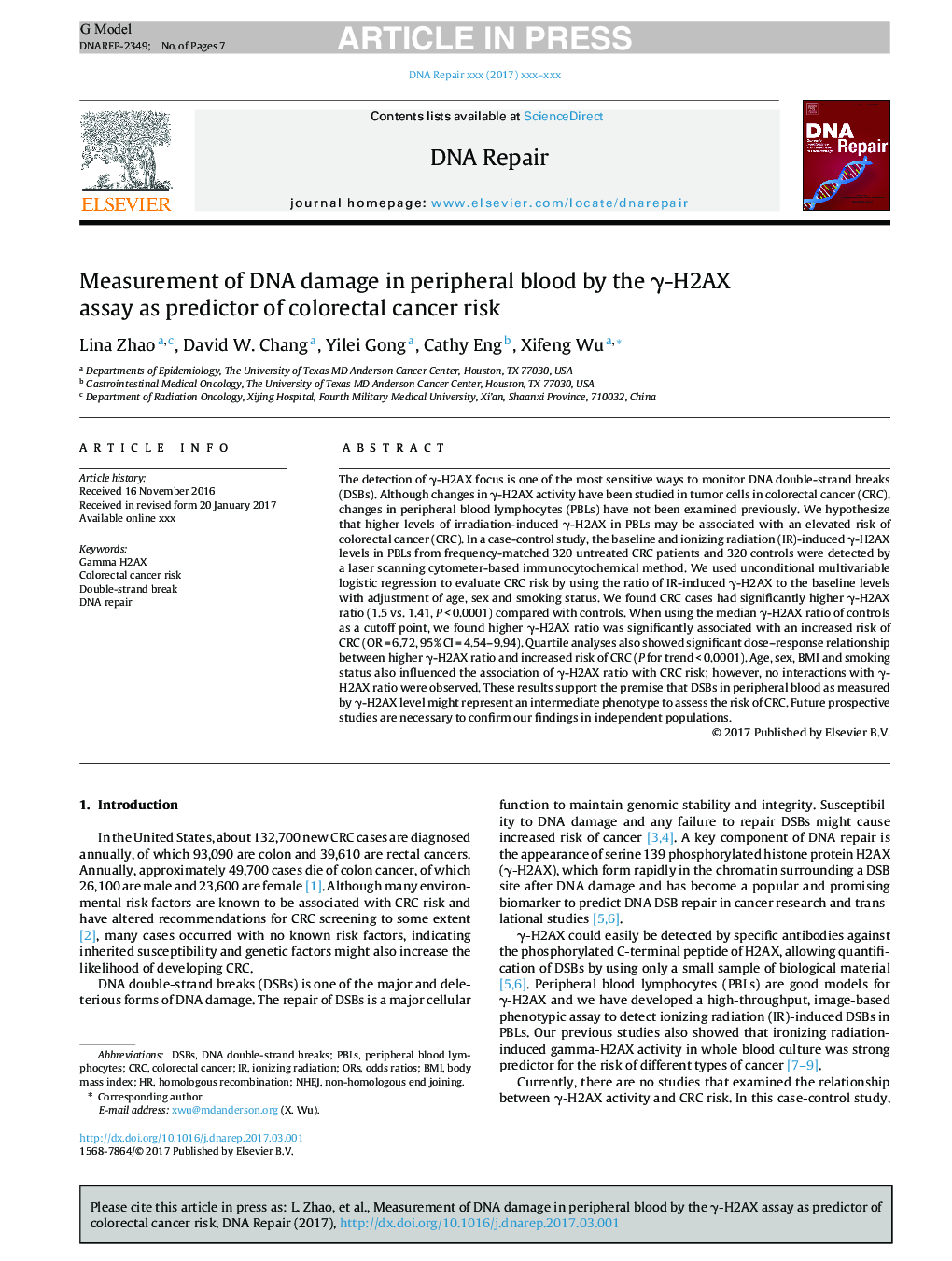| Article ID | Journal | Published Year | Pages | File Type |
|---|---|---|---|---|
| 5510913 | DNA Repair | 2017 | 7 Pages |
Abstract
The detection of γ-H2AX focus is one of the most sensitive ways to monitor DNA double-strand breaks (DSBs). Although changes in γ-H2AX activity have been studied in tumor cells in colorectal cancer (CRC), changes in peripheral blood lymphocytes (PBLs) have not been examined previously. We hypothesize that higher levels of irradiation-induced γ-H2AX in PBLs may be associated with an elevated risk of colorectal cancer (CRC). In a case-control study, the baseline and ionizing radiation (IR)-induced γ-H2AX levels in PBLs from frequency-matched 320 untreated CRC patients and 320 controls were detected by a laser scanning cytometer-based immunocytochemical method. We used unconditional multivariable logistic regression to evaluate CRC risk by using the ratio of IR-induced γ-H2AX to the baseline levels with adjustment of age, sex and smoking status. We found CRC cases had significantly higher γ-H2AX ratio (1.5 vs. 1.41, P < 0.0001) compared with controls. When using the median γ-H2AX ratio of controls as a cutoff point, we found higher γ-H2AX ratio was significantly associated with an increased risk of CRC (OR = 6.72, 95% CI = 4.54-9.94). Quartile analyses also showed significant dose-response relationship between higher γ-H2AX ratio and increased risk of CRC (P for trend < 0.0001). Age, sex, BMI and smoking status also influenced the association of γ-H2AX ratio with CRC risk; however, no interactions with γ-H2AX ratio were observed. These results support the premise that DSBs in peripheral blood as measured by γ-H2AX level might represent an intermediate phenotype to assess the risk of CRC. Future prospective studies are necessary to confirm our findings in independent populations.
Keywords
Related Topics
Life Sciences
Biochemistry, Genetics and Molecular Biology
Biochemistry
Authors
Lina Zhao, David W. Chang, Yilei Gong, Cathy Eng, Xifeng Wu,
